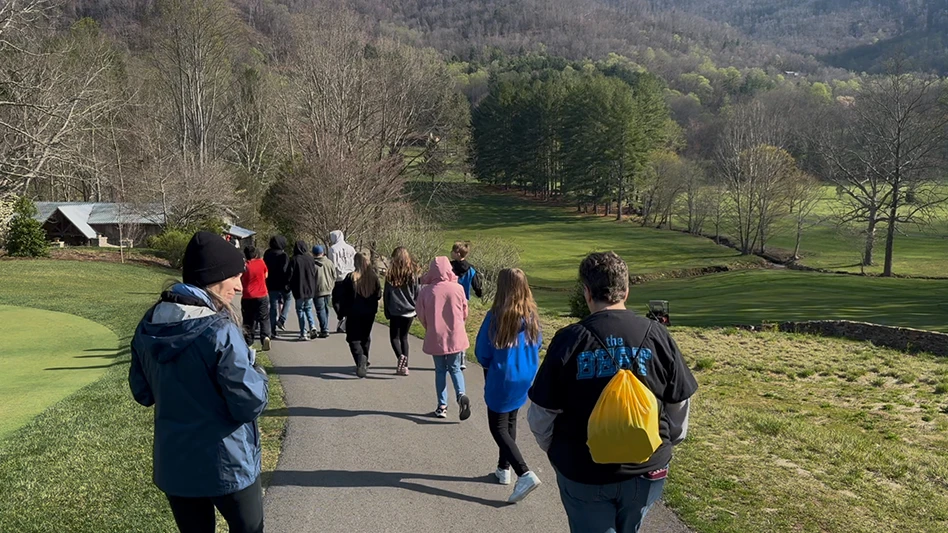Herbicides have numerous hurdles to overcome to be effective.
First, they must be applied in a correct manner according to label recommendations – and with the correct additives.
Next, herbicides have to be applied in a timely manner when the target weed is most susceptible.
Then, after herbicides contact the leaf surface, they must remain there for absorption to occur or move at the desirable rate through the soil to be absorbed by the roots. Low humidity, dry conditions or rain soon after an application can decrease weed control by decreasing the absorption of the herbicide. Once absorbed, the herbicide must translocate or move to the active site within the plant and potentially move throughout the entire plant. Plants under certain environmental stress can have decreased functionality in the vascular system, thus decreasing translocation.
Lastly, an herbicide must remain in its active form within the plant until the weed is controlled. Throughout time, the herbicide can be degraded or metabolized within the plant, thus deactivating it.
With the obstacles herbicides must overcome, it’s a marvel they work at all.
Erratic weather is the norm
The weather has become something more than just a conversation starter. With global warming, El Niño and the threat of superhurricanes, weather influences everything, even public policy. So, we shouldn’t be surprised by the effect erratic weather is having on golf course management, particularly weed control.
Consider this: In 1970, the average temperature in Illinois in January was 18.2 F. In 2006, it was 37.9 F, according to the NOAA Satellite and Information Service. This isn’t an example of global warming. It’s an example of how temperatures can fluctuate throughout time, and from year to year.
These temperature fluctuations confound our ability to predict things such as turfgrass dormancy, weed germination, disease occurrence and insect activity. To combat this, it’s often beneficial to implement management practices that are more robust under abnormal environmental conditions.
Effects of low temperature
Herbicide efficacy can vary with differing environmental conditions. Sulfonylurea herbicides, such as foramsulfuron (Revolver herbicide) can be negatively affected by low temperature conditions. When this herbicide is applied at temperatures consistently less than 55 F to 60 F, weeds such as clumpy perennial ryegrass (Lolium perenne) and clumpy tall fescue (Schedonorus phoenix) aren’t completely controlled. Both species can become chlorotic when treated with Revolver under low temperature conditions, but after three to four weeks, injury subsides and weeds recover. Unexpected low temperature swings in the spring or fall could potentially induce decreased activity in sulfonylurea herbicides.
It’s not completely understood why the effectiveness of sulfonylurea herbicides is less under relative cold weather conditions. The most popular theory focuses on the metabolism of the herbicide. During these periods of relative cold temperatures, plants are growing more slowly. Sulfonylurea herbicides are effective because they block production of essential amino acids. Because the plant is growing slowly under low-temperature conditions, the plant doesn’t need essential amino acids. The plant is in a state of hibernation for lack of a better term.
Under normal conditions, the plant would be growing and would starve to death as it continues to grow. As the plant stagnates in growth, other metabolic processes slowly degrade, or metabolize, the herbicide to a less active form.
Other theories exist concerning the decrease in control. A decrease of absorption of the herbicide or movement of the herbicide through the plant also could potentially occur during these conditions. A similar sulfonylurea herbicide, nicosulfuron, has been reported to be absorbed more by quackgrass (Elytrigia repens) and moves throughout the plants more under higher temperatures (Bruce et al., 1996).
Overcoming low temperature
Recent research at the University of Tennessee identified potential additives to overcome the decreased control that occurs when Revolver is applied during low-temperature conditions. Research was conducted to evaluate the use of ammonium sulfate and methylated seed oil to improve control of clumpy perennial ryegrass.
Revolver was applied at 0.4 fluid ounces per 1,000 square feet with and without additives. Additive treatments tank-mixed with Revolver included 2 and 4 pounds of ammonium sulfate per acre, 1 percent volume to volume methylated seed oil, 2 pounds ammonium sulfate plus 1 percent methylated seed oil, and 4 pounds ammonium sulfate plus 1 percent methylated seed oil. Treatments were applied Feb. 23, 2006, in Knoxville, Tenn. Final ratings were taken 69 days after treatment on May 3.
Clumpy ryegrass control with Revolver applied with no additives was 20 percent at the final rating. All additives except ammonium sulfate at 2 pounds per acre provided a statisically higher level of clumpy ryegrass control over Revolver applied alone. The additives ammonium sulfate at 4 pounds per acre, methylated seed oil, or ammonium sulfate at 2 pounds per acre plus methylated seed oil increased clumpy ryegrass control to 45 to 55 percent. The greatest increase in clumpy ryegrass control was observed with ammonium sulfate at 4 pounds per acre plus methylated seed oil, which increased control to 80 percent.
Others have reported similar results with enhancement of certain herbicides with additives. Absorption, translocation and accumulation of nicosulfuron are known to increase when treatments are made with ammonium sulfate or petroleum oil adjuvants (Bruce et al., 1996). Similar results have been reported with glyphosate (Roundup) when applied with crop oil or organosilicone surfactants (Collins and Helling, 2002).
A word of caution
Additives that aid an herbicide to overcome adverse environmental conditions aren’t the same as additives that enhance the performance of a herbicide under normal conditions. Many additives claim to increase the efficacy of some herbicides to the point where one could reduce the rate of the herbicide. Research cited here doesn’t support the decrease of an herbicide rate with the addition of any additive. Rather, this research potentially supports the use of additives that enhance absorption or translocation of an herbicide, or decrease the metabolism of an herbicide within the plant when applications are made under negative environmental conditions.
Final thoughts
In the area of golf course management, environmental conditions influence everything a superintendent does. Applying herbicides and other pesticides is no different. While ammonium sulfate and methylated seed oil can help Revolver improve effectiveness in low temperature conditions, one should be cautious of egregious product claims to enhance products beyond the claims of the manufacturer. And in all cases, avoid making applications of any postemergent herbicide when temperatures are below 40 F. GCI
Scott McElroy is an assistant professor of turfgrass and vegetation management at Auburn University. He’s associate editor for Agronomy Journal, a peer-reviewed journal published by the Agronomy Society of America. Previously, McElroy was an assistant professor at the University of Tennessee.
Literature cited
Bruce, J.A., J.B. Carey, D. Penner, and J.J. Kellis. 1996. Effect of growth stage and environment on foliar absorption, translocation, metabolism and activity of nicosulfuron in quackgrass (Elytrigia repens). Weed Sci. 44:447-454.
Collins, R.T. and C.S. Helling. 2002. Surfactant-enhanced control of two Erythroxylum species by glyphosate. Weed Technol. 16:1851-1859.

Explore the November 2008 Issue
Check out more from this issue and find your next story to read.
Latest from Golf Course Industry
- Ahead of the sustainability curve
- From the publisher’s pen: Watery dilemma
- The Aquatrols Company hires marketing manager
- Renovating Bredemus in West Texas
- Renovation starts at Okatie Creek GC at Sun City Hilton Head
- The Fittest Podcast in Turf: Episode 1
- New 6-hole course debuts in Oklahoma
- GCSAA announces Grassroots Ambassador Leadership Award recipients







